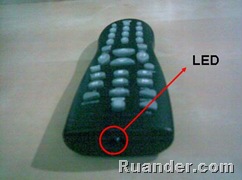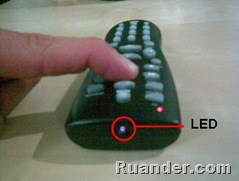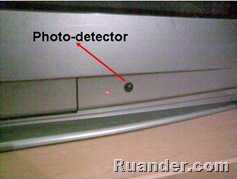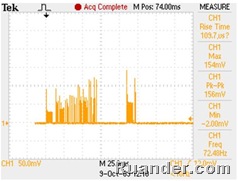A TV remote control sends signals to the TV through a high frequency pulsed Light Emitting Diode (LED). The LED is located at the front of the remote.

You may have noticed, if you press a key on the remote, you won’t be able to see the LED turn on with your eyes. This is because this type of LED emits light signals in the near infrared spectrum (~940nm wavelength), which is not in the visible range (380nm to 750nm wavelength for the visible range). However, if you look at the LED through a CCD camera (let’s say your digital camera, or even your cell phone digital camera) you will see the LED light up.

CCD cameras use an array of photodiodes (usually silicon base photodiodes) to capture the light. These photodiodes capture the near infrared spectrum (in the case of Silicone up to 1100 nm of wavelength). Therefore, the TV remote control LED will light up if seen through a CCD camera (such as a digital camera) but not as seen by the naked eye. The TV uses a photo-detector to detect the signal from the LED remote.

As mentioned before this signal is at a high frequency rate. For example, here is the signal for the channel “3” key on a particular remote.

The carrier frequency for this remote was 38 kHz with a sub-modulation frequency of about 900Hz. The signal itself looks like a bar code signal. The TV captures this signal and converts it to the desired command.

actually not sure if my last comment was posted well here
ReplyDelete